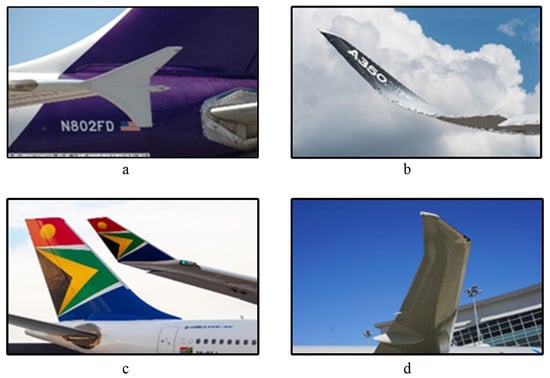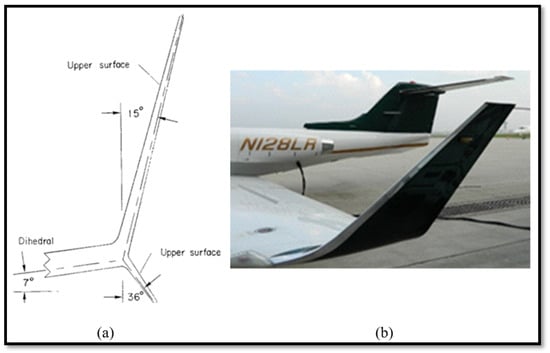Wingtip vortices generated from aircraft wingtips, as a result of the pressure differential at the wingtip, constitute a major component of the total drag force, especially during take-off and landing. In addition to the drag issue, these vortices also pose a significant hazard to smaller aircraft flying in the wake of the larger airplane. The wingtip vortices play a crucial role in aerodynamic efficiency, fuel consumption, flight range, and aircraft stability. This article provides an overview of six decades of extensive research in the field, aimed at mitigating the negative impact of wingtip vortices on the aerodynamic performance of airplanes.
1. Wingtip Vortices and Their formation
Vortices are circular patterns of spinning fluid, and they are generated when an aerodynamic surface with a large span, like the wing of an airplane or the blade of a chopper, moves in a fluid to produce lift. As these vortices often form close to the tips of the lifting surface, they are called wing vortices, wingtip vortices, or trailing vortices. The vortices are characterized by high vorticity levels, extensive areas of strongly spinning fluid, and substantial persistence downstream of the surface. The same characteristics may also prevail in vortices generated from other applications. Thus, a thorough physical understanding is necessary to lead to a range of applications.
As a byproduct of lift generation, higher pressure below the wing induces the flow to curl about the wingtip from the low-pressure region onto the upper surface. The process forms a flow of helical structure known as a wingtip vortex that entrains the wing wake and propagates downstream, as shown in
Figure 1. A vortex flow is typically considered a region in a fluid in which the gradient or curl of the velocity components provides vorticity magnitudes and directions, indicating a spiral flow [
1,
2,
3]. Wingtip vortices have an impact on the flight operations of aircraft because of the development of induced drag and turbulence [
4]. It is well known that wingtip vortices impact the pressure field near the wing tip where the lifting surface terminates in the fluid [
5]. In other words, when the wing generates lift, a net circulation around the wing and in the downstream flow is essentially inevitable [
6,
7,
8].
Figure 1. Wingtip vortices from an airplane during landing [
9].
2. Role of Wingtip Vortices in Aerodynamics
Wingtip vortices alter the trajectory of the fluid flow in the wake [
10,
11,
12]. The dynamic behavior of the wingtip not only affects the induced drag forces on the wing [
13,
14,
15] but also creates an undesirable flow structure in the wake of the wing. Researchers have studied this phenomenon with a view to reducing its adverse effects on aircraft safety, fuel consumption, and the structural integrity of aircraft wings. The effects of wingtip vortices on aerodynamic performance are well known in many applications, such as in aeronautical, marine, agricultural, industrial, and environmental science [
16,
17]. The resultant wingtip vortices, for instance, prolong the durations of take-off, flying, and landing. Moreover, they cause a non-uniform, inhomogeneous flow pattern in the downstream flow when agricultural spraying is performed using an airplane [
18]. In marine engineering, wingtip vortices initiate cavitation on the surface of the blades and cause detrimental vibrations [
17]. Similarly, vortices are also generated from the finite structures [
19,
20,
21]. The noise generation and energy losses are other demerits of wingtip vortices [
22,
23,
24]. Engineers and scientists have, for many years, been dedicated to discovering methods to alleviate the detrimental impacts of these vortices across a broad spectrum of applications. In the natural world, creatures like owls alter their wingtip feathers in a manner that effectively suppresses wingtip vortices and the accompanying noise [
25,
26,
27,
28].
3. Control of Wingtip Vortices
The phenomenon of wingtip vortices has captivated researchers for many decades in their attempts to minimize their harmful effects. Researchers have made extensive experimental and theoretical studies [
29,
30,
31,
32,
33,
34,
35] as well as numerical investigations [
29,
35,
36,
37,
38,
39,
40,
41] to understand the characteristics of wingtip vortices. To mitigate the adverse effect of wingtip vorticities, many wingtip devices have been proposed over the years with varying degrees of success. Some of the claimed benefits of these devices are summed up in the following points:
-
Reduced fuel consumption [
42];
-
Increased flight range [
43,
44];
-
Reduced take-off field length [
44];
-
Increased cruise speed and altitude [
45];
-
Reduced take-off noise [
46,
47];
-
Increased aircraft stability [
48];
-
Improved runway throughput by mitigating wake turbulence and allowing for closer aircraft spacing [
49].
4. History of Wingtip Devices and Some Commercial Applications
A winglet is a device with an airfoil profile affixed to the wing tip that deflects the wingtip vortex away from the lift-producing surface of the wing. Wingtip, on the other hand, is a more general term that refers to any device attached to the wing at its tip. The two terms are sometimes used interchangeably. The use of these devices increases the effective wingspan without making the wings longer. This effect leads to an increase in the left and a reduction in the induced drag but at the expense of increasing the form drag and the aircraft weight. Therefore, if the device is not carefully designed, the increases in the form drag and weight could cancel out any possible improvement in wing efficiency.
The use of wingtip devices to mitigate the adverse effects of wingtip vortices dates back to the 1800s. Lanchester, in 1897, as a pioneer in this field, came up with what is considered the first attempt to use such devices [
50]. Based on his theoretical and experimental work, he proposed the use of a wing endplate to reduce wing drag under high lift conditions (
Figure 2a). Unfortunately, the reduction in drag was not realized under other flight conditions. The endplate’s success in reducing the induced drag was offset by the increase in friction and interference drag. It soon became obvious that, to reduce these two forms of drag, the wingtip device must have a better aerodynamic shape. In 1952, Sighard Hoerner designed a wingtip that became known as the Hoerner tip [
51] (see
Figure 2b). Despite the relative success of the Hoerner tip on small aircraft, a significant improvement in drag reduction was not made until the invention of Whitcomb’s winglet device in 1974 [
52]. A detailed geometry of Whitcomb’s device can be seen in
Figure 3a. The winglet, through a series of wind tunnel tests, showed a reduction in induced drag by 20% and an improvement in the lift-to-drag ratio
CL/
CD of 9% [
50]. One of the first commercial airplanes to use Whitcomb’s winglets was the Learjet 28 in 1977 [
53,
54], as shown in
Figure 3b.
Figure 3. (
a) Detailed geometry of Whitcomb winglet [
52], (
b) Learjet 28 with winglets [
54].
The introduction of the winglet on the Learjet 28 led to a 26% reduction in cruise fuel consumption in comparison to an older model of the same size at the same payload/speed combination. The modifications also improved take-off and landing performance [
53]. In recent years, further variants of winglets have been introduced, including fence wingtips, blended wingtips, canted winglets, and raked winglets (
Figure 4). Boeing was one of the first airlines to incorporate winglets into one of their major commercial aircraft, the 747-400. The addition of the winglet resulted in a 3% increase in flying range [
50]. Aviation Partners Boeing showed a clear improvement in flight range and payload as a result of retrofitting the Boeing 737-800 with winglets [
55].
Figure 4. Other winglet variations: (
a) fence winglet, (
b) blended winglet, (
c) canted winglet, and (
d) raked winglet [
56].
This entry is adapted from the peer-reviewed paper 10.3390/aerospace11010036




